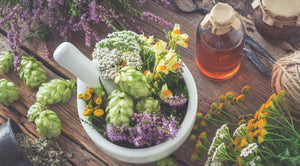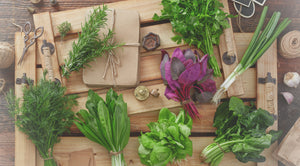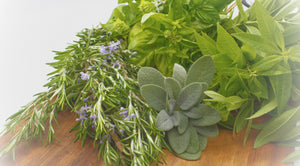Preparing Your Soil
Preparing Your Garden Soil for Spring Herb Planting

Step 1: Testing The Soil
The first thing to remember is that working your soil too early can be a mistake; if your soil is still wet from heavy snowfall or spring rains, working it early means that you are actually compacting the soil, making it harder for plant roots to establish. You want some air space between the soil particles, and clumpy heavy soil can work to trap pockets of air round roots, damaging them. Please remember that not many plants can deal with compacted soil, so this should be your first step ~ loosening compacted soil by digging or tilling and make sure the first 6 - 8" is 'worked'. This is important for water penetration, allowing roots to grow deeper and spread wider and it brings oxygen to plant roots.Tried and True Test: grab a handful of soil from your garden, and squeeze it together to form a ball. Apply a bit of pressure to the ball, and see what happens: if the ball breaks apart into loose pieces, it’s time to get digging. If pressure causes the ball to break into large chunks or just flatten, there is still too much moisture. If the ball doesn’t break or if breaks into a few solid clumps, your soil is still too wet.
Step 2: Cleaning Up
If you took our advice in the fall, you cleaned your beds of any dead or dying plant material. It’s time to do that step again, but be careful NOT TO take up any of your perennial herbs ~ those herbs that will come back year after year. They may look dead now, but depending upon where you live, they are most likely dormant. After a very harsh winter you may lose a few of those more hardy plants to Mother Nature, but when in doubt, wait. If you grew a cover crop, and your soil is ready to be worked, now is the time to till those plants into the soil. A cover crop is a good idea for a number of reasons: it helps to keep the soil from eroding and at the same time, it enriches your soil for a better garden the next season. If you didn't grow a cover crop, just make note for next fall. It's a great last step as your growing season comes to an end.Step 3: Amending
Even the best of gardens can be helped with the addition of organic amendments. If you have had good luck with your garden in the past growing seasons, and have had no significant issues with your plants, chances are your soil is healthy. However, we recommend adding organic compost in the early spring. If you have had significant issues, and you feel that there may be something ‘wrong’ with your soil, it is a good idea to have your soil tested. Do it now (as long as the ground isn’t frozen) so that the results will be back in time for you to remedy the issue. Your local extension agency is a good source.Amending the soil with high quality organic matter will give your plants a great start. Compost feeds the soil, releasing nutrients slowly in a readily available form. Compost will improve the drainage by adding porous organic matter, and also improves water retention. The best source is your own compost, but if you don’t have any then a good quality bagged compost is a fine alternative. We advise against using grass clippings as they are often compromised with added pesticides.
Read more about composting 'my way' here!





